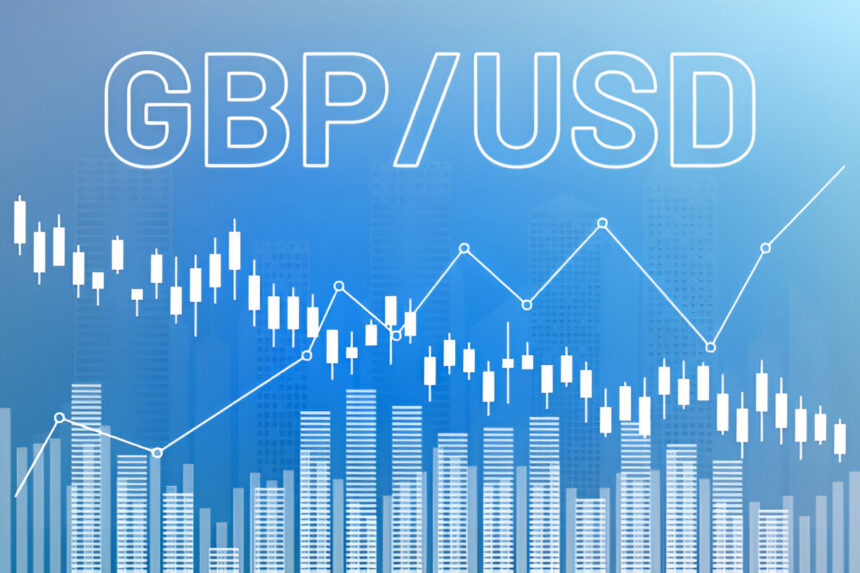The Pound Sterling (GBP) is showing modest gains against the US Dollar (USD), nudging near the 1.3600 mark during Thursday’s European trading session. This move comes despite rising concerns about the UK economy and broader global trade instability. The GBPUSD pair is taking advantage of a momentary stall in the US Dollar’s recent rally, as fresh tariff announcements and geopolitical developments weigh on investor confidence.
The uptick in Sterling reflects a classic case of relative resilience — not because of strong domestic fundamentals in the UK, but rather due to the softening in the Greenback’s position as investors reassess the impact of new US trade tariffs and await concrete policy signals.
US Tariffs Roil Currency Markets
Driving the volatility in global currency markets is the reemergence of trade tensions, largely stemming from the United States. President Donald Trump has unveiled a sweeping set of reciprocal tariffs on 21 countries, including major allies such as Japan and South Korea, with the measures set to take effect on August 1.
These new tariffs come at a critical time, with the global economy already facing headwinds from geopolitical fragmentation and weakening investment sentiment. Trump’s post on Truth Social also announced a 50% tariff on copper imports, highlighting the administration’s renewed focus on reshaping trade policies to support domestic industries.
While the US has secured trade deals with the UK, Vietnam, and reached a limited understanding with China, uncertainty remains high as negotiations with key economies like the Eurozone, Canada, Mexico, and India are still pending. Failure to secure trade agreements by the looming August 1 deadline could intensify global trade worries, increasing downside risks for the USD.
US Dollar Index Slips as Trade Concerns Mount
The US Dollar Index (DXY), which measures the Greenback against a basket of six major currencies, has edged lower to around 97.40, after a week-long stretch of gains. Investors are now recalibrating their expectations in light of the uncertain outlook for US trade relations.
The Dollar’s weakening reflects rising fears that retaliatory tariffs could hurt US exports, increase import costs, and feed inflation — a scenario that complicates the Federal Reserve’s policy outlook.
BoE Flags Mounting Risks for UK Economy
Despite the Pound’s modest gains, the underlying fundamentals of the UK economy are far from reassuring. The Bank of England (BoE) released its mid-year Financial Policy Committee (FPC) report on Wednesday, painting a cautionary picture of the UK’s financial health.
According to the FPC, the UK faces elevated risks of:
Sharp declines in risky asset prices
Sudden shifts in investor sentiment and portfolio allocation
A prolonged breakdown in historical market correlations
These concerns are being driven by geopolitical tensions, fragmentation in global trade and financial systems, and rising sovereign debt pressures. In short, the central bank is warning of a fragile economic environment where shocks can spread more easily and hit harder.
Fiscal Credibility in Question
Further compounding the UK’s economic challenges is growing skepticism about the government’s fiscal discipline. Just last week, Chancellor Rachel Reeves announced a significant increase in Universal Credit (UC) — a move that, while socially welcome, raises questions about the administration’s commitment to reducing the budget deficit.
The announcement comes at a time when markets are closely watching sovereign debt sustainability, particularly in economies like the UK where fiscal buffers have already been stretched post-pandemic. The perception that the government is expanding expenditure without clear offsets may hurt investor confidence in gilts (UK government bonds), and indirectly weigh on the Pound.
Upcoming UK GDP Data Could Provide Direction
Investors are now keenly awaiting the UK’s GDP and manufacturing data for May, which is set for release on Friday. Expectations are modest: the economy is forecast to have grown by just 0.1%, following a 0.3% contraction in April. Should the data beat expectations, it could lend the Pound a further lift. However, any disappointment will reinforce the BoE’s warnings and deepen concerns about stagnation.
Fed Minutes Reveal Divergence Among Policymakers
Across the Atlantic, the Federal Open Market Committee (FOMC) released the minutes from its June 17–18 policy meeting on Wednesday, showing a growing divide among Fed policymakers. While the majority support maintaining interest rates steady for now, citing ongoing tariff-related uncertainties, two members likely Fed Governors Christopher Waller and Michelle Bowman are advocating for rate cuts as early as July.
This dovish tone marks a subtle shift from the Fed’s previously hawkish stance and signals the central bank’s willingness to respond if inflation driven by tariffs proves to be temporary and economic risks mount.
The minutes show the Fed is wary of acting too soon but remains prepared to lower rates later this year to support the labor market and maintain price stability.
Tariffs, Inflation and the Fed’s Balancing Act
One of the key variables now influencing the Fed’s calculus is the potential inflationary impact of tariffs. A 50% import tax on copper, for instance, could push up costs for key sectors including construction, manufacturing, and electronics and increase producer price inflation.
But policymakers believe this inflationary pressure could be “modest and temporary.” If confirmed, that would strengthen the argument for rate cuts to prevent any prolonged economic drag, particularly as global trade disruptions increase.
Pound Outlook: A Battle Between Weaknesses
In this complex macroeconomic landscape, the GBPUSD pair reflects a tug-of-war between two weakening currencies the Pound weighed down by domestic economic risks, and the Dollar pressured by trade fears and dovish Fed expectations.
Key support for Pound lies near 1.3550, while the next resistance zone sits around 1.3635–1.3650. A clear break above that level would signal short-term bullish momentum, possibly targeting 1.3700. However, downside risks remain prominent, especially if upcoming UK data disappoints or if the Fed backs away from rate cuts.
Investor Sentiment: Wait and Watch Mode
Markets remain in wait-and-see mode, with risk appetite subdued. Equity indices are fluctuating, commodity prices mixed, and bond yields are edging lower as investors flock to safer assets. The broader market narrative is dominated by questions like:
Will Trump escalate tariffs further if deals aren’t reached by August 1?
Can the Fed act fast enough if economic data weakens?
Will the UK government rein in spending amid rising debt pressures?
Until there is clarity on these fronts, currency markets are likely to remain volatile, with traders sensitive to every headline and data point.
Conclusion: Pound Gains Are Fragile
The Pound’s modest gains against the US Dollar offer a tentative respite for bulls, but the broader backdrop remains fragile. The interplay between US trade policy, Federal Reserve rate expectations, and UK economic data will determine whether Pound can sustain its current level or slip back into bearish territory.
With central banks increasingly cautious and geopolitics heating up, the only certainty in the market right now is uncertainty itself.
Disclaimer: This blog is for informational purposes only and does not constitute financial advice. Always conduct your own research and consult a professional advisor before making investment decisions.
[sc_fs_multi_faq headline-0=”h2″ question-0=”Why did the Pound Sterling rise against the US Dollar?” answer-0=”The Pound gained due to a softening in the US Dollar amid uncertainty around new US tariffs and dovish Fed commentary in the FOMC minutes.” image-0=”” headline-1=”h2″ question-1=”What is the impact of US tariffs on the Dollar?” answer-1=”New tariffs may increase inflation and hurt exports, weakening the Dollar as markets price in potential Fed rate cuts.” image-1=”” headline-2=”h2″ question-2=”When will the UK’s GDP data be released?” answer-2=”The UK GDP and factory data for May are scheduled to be released on Friday. A weak print could weigh on the Pound.” image-2=”” count=”3″ html=”true” css_class=””]









